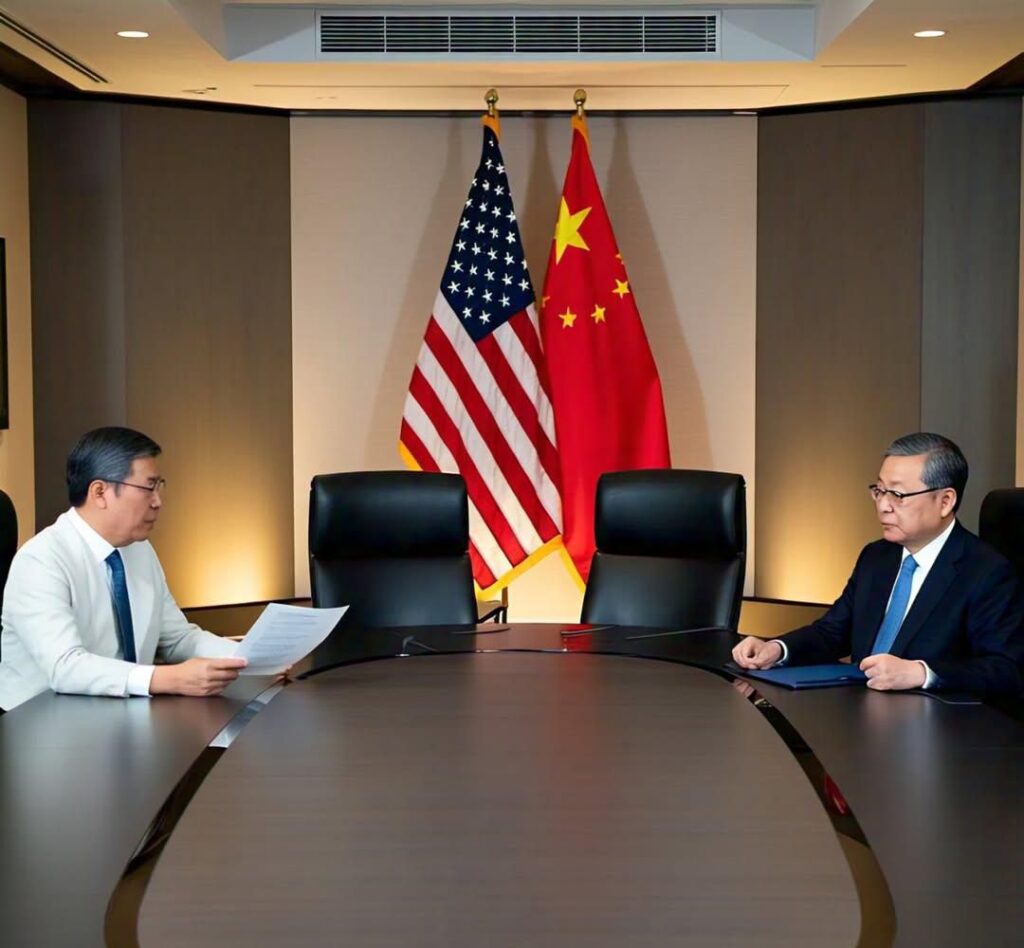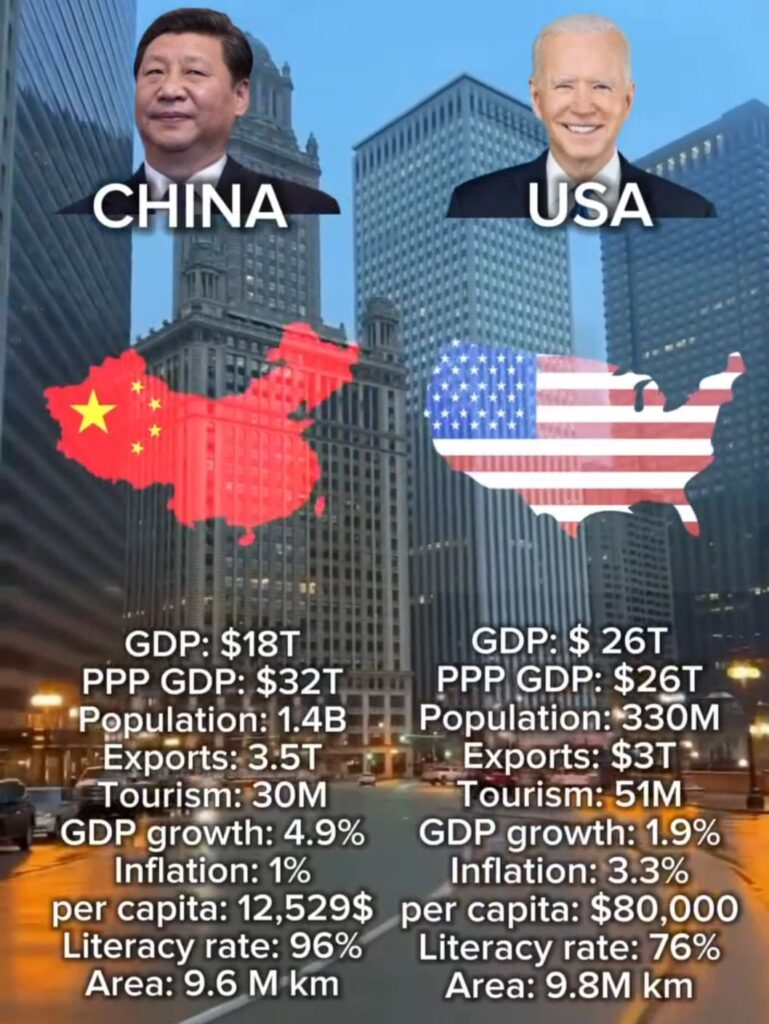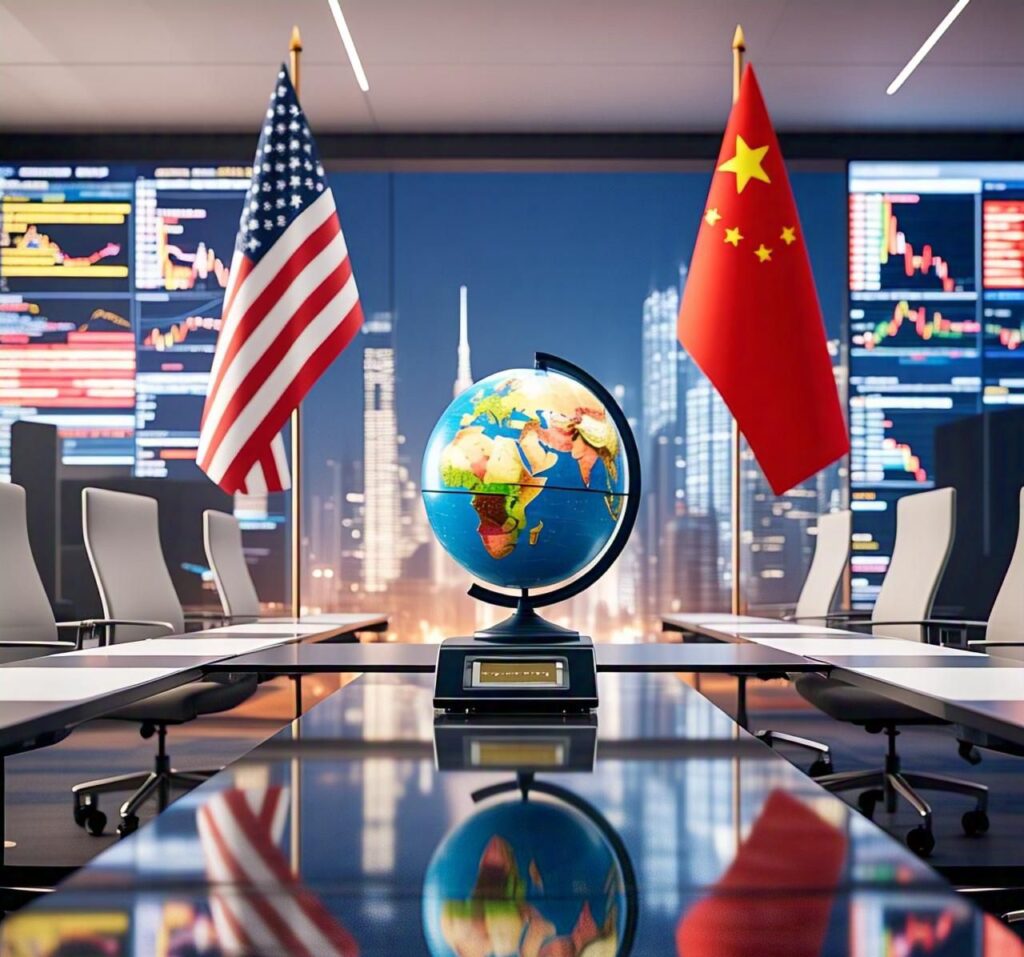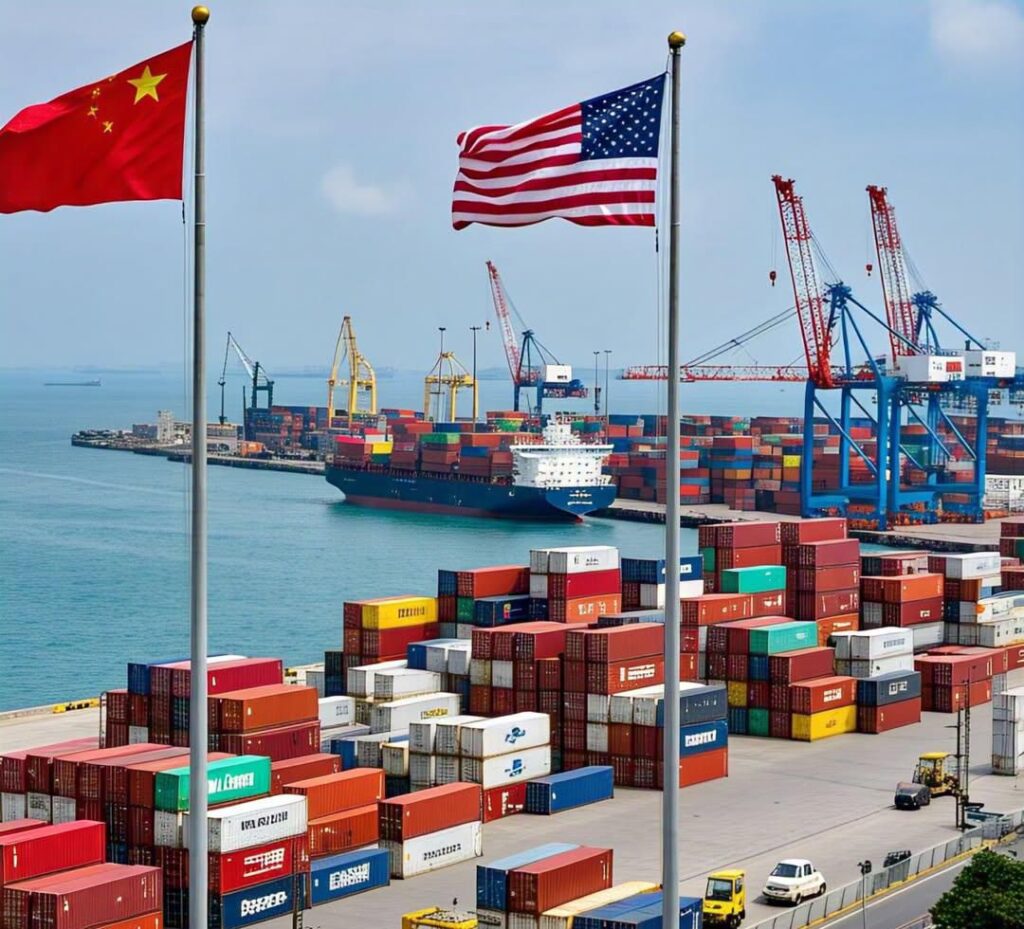🌐 Introduction: The Two Economic Titans
In 2025, the world is watching as the United States and China navigate one of the most complex trade relationships in history. From tech rivalries to tariffs, their economic strategies are shaping the global market — and the stakes have never been higher.
📊 The Current Landscape of US-China Trade in 2025
Despite years of tension, trade between the two nations remains enormous:
Bilateral trade in 2024 surpassed $700 billion, but with a shift in composition.
The US is still importing Chinese goods, but with a growing push to diversify.
China is increasing trade with BRICS+ countries, reducing dependency on the West.

⚙️ Key Tensions in 2025
1. Tech War Intensifies
The US has tightened chip and AI export controls, limiting China’s access to cutting-edge semiconductors.
China, in turn, is investing heavily in homegrown AI, EV, and chip startups.
2. Tariff Uncertainty
Several Trump-era tariffs remain in place.
Biden’s administration (or its successor) has been strategically adjusting tariffs, especially in solar panels, steel, and EV batteries.
3. Supply Chain Shift
US companies are “China-plus-one” sourcing — setting up factories in Vietnam, Mexico, and India.
Apple, Tesla, and other giants are spreading operations while still partially dependent on China’s manufacturing capacity.

🔁 Cooperation Amidst Competition
Despite geopolitical heat, some areas see cooperation:
Climate talks between the US and China resumed in 2025, focusing on carbon neutrality by 2060.
Rare Earth Minerals agreements to stabilize global supply chains.
Trade in agriculture, pharmaceuticals, and consumer electronics continues relatively smoothly.

📉 Who’s Winning the Trade Chess Game?
China is expanding its influence via the Digital Yuan and trade deals with Russia, Iran, and the Global South.
The US is strengthening ties with G7 nations, India, and ASEAN to build an economic counterweight.
Both are not just trading partners — they are rivals shaping the next phase of globalization.
📈 What It Means for the Global Economy
Smaller countries are caught in the crossfire of sanctions and subsidies.
The “economic bipolarity” (US-led vs China-led) may dominate the 2030s.
The World Trade Organization’s relevance is under pressure as bilateral and regional deals take over.

✅ Conclusion:
Strategic Competition With No Easy EndIn 2025, US-China trade relations remain a paradox — deeply intertwined yet dangerously fragile. The future may not be about full decoupling, but rather managed competition, where both nations compete, collaborate, and cautiously coexist in a divided but connected world.

